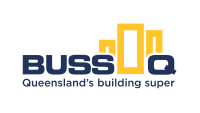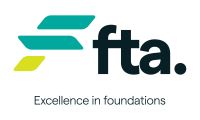- Home
- Services & advice
- Health, safety & environment
- Safety documents & signage
- Safe work method statements (SWMS)
Safe work method statements (SWMS)
Menu
- Membership
-
Services & advice
- Building, planning & development
- Contracts & disputes
- Employment & wages
-
Health, safety & environment
-
Common hazards
- 10 critical risk events and controls
- Asbestos
- Bullying & harassment
- Chemicals
- Confined spaces
- Electricity
- Excavation
- Falling objects
- Fatigue
- Heat-induced illness
- Heights
- Manual tasks
- Mobile plant
- Noise
- Psychosocial Hazards at Work
- Power tools
- Severe weather
- Silica
- Site security
- Sun & ultraviolet rays
- Storage & housekeeping
- Underground & overhead services
- Health & Safety Representatives (HSRs)
- Incident management
- Mental Health
- Risk management
- Safety fundamentals
- Safety documents & signage
- Safety health checks
- WHS self assessment tool
-
Common hazards
- Laws, codes & regulations
- Licensing
- Members Legal
- Products
- Training
- What's on
- News & publications
- Homeowners
- About
- Contact
- Terms & conditions
Related links
You must prepare a Safe Work Method Statement (SWMS) for all high-risk construction work before any work can begin.
Consult with workers who will be performing the work and include step-by-step procedures on how to perform the work safely and how to manage any associated risks.
The builder is responsible for preparing a SWMS for its employees and the subcontractor for their workers. A copy of the SWMS must be given to the principal contractor before work begins. The principal contractor is also responsible for taking all reasonable steps to obtain safe work method statements from their subcontractors.
Everyone involved in the work must be familiar with all safety procedures outlined in the SWMS.
It’s important to review your SWMS regularly and to make revisions if work processes or control measures change throughout the project.
What does it include?
A Safe Work Method Statement must:
- Identify high-risk construction activties
- Identify related hazards and risks to health and safety
- Describe what control measures to implement and explain how to monitor and review them.
High-risk construction activities
High-risk construction activities include:
- Risk of falling more than two metres
- Work on a telecommunication tower
- Demolition of an element of a structure that could disturb asbestos, is load-bearing or is related to the physical integrity of the structure
- Structural alterations or repairs needing temporary support to prevent collapse
- Working in or near a confined space or a shaft, tunnel or trench with an excavated depth of more than 1.5 metres
- Using explosives
- Working near pressurised gas distribution mains or piping, or on or near chemical, fuel or refrigerant lines
- Working on or near energised electrical installations or services
- Working in an area that may have a contaminated or flammable atmosphere
- Work with tilt-up or precast concrete
- Work on, in or adjacent to a road, railway, shipping lane or other traffic corridor used by traffic other than pedestrians
- Working in an area with movement of powered mobile plant
- Working in an area with artificial extremes of temperature
- Diving work or working in or near water or another liquid that involves a risk of drowning.
SWMS template
We've developed a Safe Work Method Statement template to help you meet your obligations.
The SWMS template is available free for members via Master Builders eDocs system. Learn more about eDocs.
Need more information?
For assistance in developing SWMS and understanding the legislative requirements for implementing, monitoring and reviewing your SWMS, you can contact the Master Builders WHS Team, or visit the Safe Work Australia Interactive SWMS Guidance Tool. While the interactive tool deals with the requirements under the model WHS laws, it also complies with Queensland's WHS Act requirements. Check with your local regulator to find out if these requirements apply to the Commonwealth, or your state or territory.





